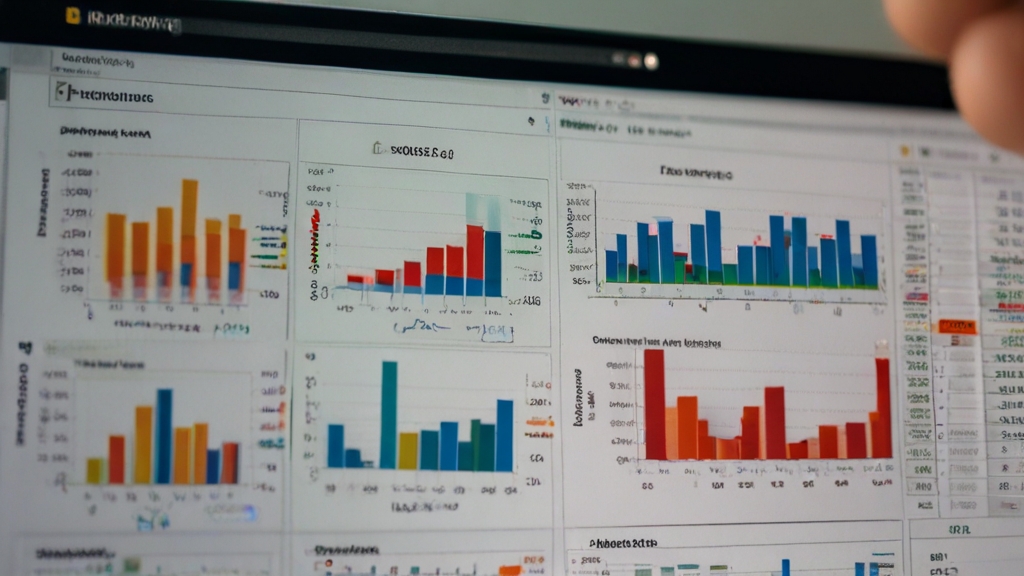Unit 1: Marketing and People:
1.3.1: Meeting Customers’ Needs
The Market:
Market:
- Set of arrangements that allows buyers and sellers to communicate and trade in a particular range of goods and services.
Marketing:
- A management process involved in identifying, anticipating, and satisfying consumer requirements profitably.
Mass market:
- When a business sells into the LA competitors of the market where there are many similar products offered by competitors
Benefit | Limitation |
|
|
|
|
|
|
Niche Market:
- Market that targets a smaller segment of a large market where customers have specific needs and wants.
Benefits | Limitation |
|
|
|
|
|
|
Market Size:
- The size of a market can be estimated/calculated by the total sales of all the businesses in the market:
Market value
- Total money spent by customers buy products in money value.
Market volume
- Physical quantity of products that are produced and sold.
Market share
- Describes the proportion of a particular market held by a business, product brand, number of businesses, products.
Market share formula:
Sales of a business/ Total sales in the market x 100
Branding:
Brand name:
- Name, term, sign, symbol design or any feature that allows consumers to identify the goods and services of a business and to differentiate them from those of competitors
Uses of branding:
- Differentiates products from rivals.
- Creates customer loyalty.
- Helps with product recognition.
- Develops an image.
- Can charge a premium price when the brand becomes strong
Dynamic Market:
- One that is subject to rapid or continuous changes
Online Retailing:
- The retailing of goods online
Benefits | Limitations |
|
|
|
|
|
|
Adapting to change:
- Having flexible working practices
- Undertaking market research
- Investing in the business
- Continuous improvement – Kaizen
- Develop a niche.
Competition and the market:
Competition:
- Rivalry amongst sellers trying to increase goals such as increasing profit, market volume and share.
Consumers benefit to competitive market:
- More competition = Higher/better quality products
- Customers’ needs are met.
- Lower prices as firms aim for efficiency.
- More customer choice
Businesses benefit to competitive market:
- Forced to be more efficient = lowers costs
- Forced to produce high quality products – customer loyalty.
Difference between risk and uncertainty:
Risk:
- Possibility a business will have lower profits/ experience a loss rather than a profit.
Uncertainty:
- Events that are completely beyond the control of businesses and can have an impact on the market.
2) Market Research:
Market Research:
- The collection, presentation and analysis of information relating to the marketing and consumption of goods and services.
Purpose:
- Identifies and anticipates customers’ needs and wants.
- Quantify likely demand.
- Get an insight into consumer behavior.
Primary Market Research:
- Gathering new information resting to the market and consumption of good and services
E.g.: – Surveys – Questionnaires – F2F interviews – Focus groups
Advantages | Disadvantages |
|
|
|
|
|
|
Secondary Market Research:
- Collection of existing data
E.g.: – Social Media – Newspapers – Radio
Benefits | Limitations |
|
|
|
|
|
|
Database:
- Organized collection of data stored electronically with instant access, searching and sorting facilities.
Respondents:
- people/organizations that answer questions in surveys.
Target population:
- Total numbers of consumers in each group
Qualitative research:
- Collection of data about attitudes, beliefs, and intentions
Quantitative research:
- Collection of data that can be quantified.
Sampling methods:
- Random Sampling
- Quota Sampling
- Stratified Sampling
Sample:
- Small group of people that must represent a proportion of a total market when carrying out market research.
- Random Sampling:
- Respondents are selected randomly for interviews.
|
|
- Quota Sampling:
- Respondents are selective non-randomly where several groups share the same characteristics.
|
|
- Stratified Sampling:
- Method where sample is divided into segment based on the population’s knowledge.
3) Market Positioning:
Market Positioning:
- Views consumers have on quality, value for money and image of a product in relation to those of competitors.
Market Orientation:
- Approach to business which places the needs of consumers at the center of the decision-making process.
Product Orientation:
- An approach to business which places the emphasis upon the production process and product itself.
Market Positioning:
- Positioning the view consumers have about the quality, value for money and image of a product in relation to those of competitors.
Factors that influence market positioning:
- Nature of product
- Business objectives
- Views of those in control
- Nature and size of the market
- Degree of competition
Market Segmentation:
- Part of a whole market where a particular customer group has similar characteristics.
Differs by:
- Customers’ needs and wants.
- How customers pay
- Location of customers
- Knowledge and experiences of customers
Types of segments:
- Geographic Segmentation:
- By: nations, cities, and other territories
- Demographic Segmentation:
- Age, religion, nationality, ethnicity
- Psychographic Segmentation:
- Based on customers attitudes, opinions, and lifestyles
- Behavioral Segmentation:
- Based on how customers relate to a product: Occasions, loyalty, usage.
Benefits | Limitation |
|
|
|
|
|
|
|
|
Market Mapping:
- Two-dimensional diagram showing 2 qualities/characteristics of a brand and rival brands in the market.
Benefits | Limitation |
|
|
|
|
|
|
Competitive Advantage:
- An advantage that enables a business to perform better than its rivals in the market.
Ways to develop CA:
- Product design
- Product quality
- Promotion
- EOC
- Flexibility
- Delivery times
- Ethical stance
- Customer service
Product differentiation:
- Marketing strategy that strives to distinguish a company’s products/services from the competition.
Purpose:
- Ability to change/charge a higher price.
- Recognition
- Extend product range.
- Brand development
- Overcome competition.
Added Value:
- Difference between selling price and cost of materials
Importance?
- Helps pay other costs.
- May be able to make a profit.
Increasing Added Value:
- Increase selling price.
- Reduce cost of materials
Uses of AV for businesses:
- Bundling
- Customer service
- Packaging
- Offers
- Customization
4) Demand:
Demand:
- Quantity of a product bought at a given price over a period of time
Decrease in demand | factors | Increase in demand |
Fall in prices | substitutes | Rise in prices of substitutes |
Rise in price of compliments | compliments | Fall in price of compliments |
Lower incomes | incomes | Higher incomes |
Falls out of fashion taste | fashion tastes | Product is in fashion taste |
reduction/no advertising | advertising | Increase in advertising |
Change in demographics | demographics | Change in demographics |
Adverse external shocks | external shocks | Favorable external shocks |
Inferior goods:
- Goods for which demand will fall if income rises or rise if income falls
Normal goods:
- Goods for which demand will rise if income rises and falls if income falls.
Substitute goods:
- Goods that can be bought as an alternative to others but performs the same function.
5) Supply:
Chapter 9.1 – Marketing objectives and strategy
Marketing objectives:
- Goals that a business attempts to achieve through its marketing objectives.
Marketing strategies need to be:
- S – specific
- M – Measurable
- A – Agreed
- R – Realistic
- T – Time period
3 Main Marketing Objectives:
- Increase revenue.
- Increase Market Share
- Build a Brand
Marketing strategy:
- A set of plans that aim to achieve a specific marketing objective.
Niche Marketing:
Marketing Mix:
Product:
- Differentiated products.
- Products will be very specific to customer needs.
Price:
– More flexibility in pricing
– The ability to charge a higher price
Place:
- Selective distribution channels
- Exclusive distributors
Promotion:
- Targeted promotion
- Advertised are placed in specialized publications.
Mass Marketing:
Marketing Mix:
Product:
- Many products with close substitutes
- If a business develops a USP they will gain an advantage
Price:
– Prices are like competitors
– ‘Price war’ can occur
Place:
– Multiple channel distribution
– Competition for prominent places in shops and supermarkets
Promotion:
- Absence of price competition, focus is all on promotion.
- A lot of TV advertising
B2B (back to business) and B2C Market Strategies:
How do businesses develop customer loyalty:
- Communication
- Customer service
- Customer incentives
- Personalization
- Preferential treatment
Marketing Objectives:
The product life cycle: The different stages that a product passes through over time and the sales that can be expected at each stage.
Chapter 9.2 – Marketing objectives and strategy
The Boston Matrix:
- A 2×2 model matrix model that analyses a product portfolio according to the rate of the market and the relative market share of products within the market.
Question Marks:
- Known as the ‘problem child.’
- Low market share
- Fast growing market
- Profits may be low – Weak market share.
- Can turn into a star.
- With investment can achieve increased sales
Stars:
- High market growth
- High market share
- Fast growing market
- High profits
- Businesses will need to invest to keep sales and profits high.
- Net Cash Flow = Profits – Investments in production and promotion
Cash Cows:
- Low market growth
- High market share
- Slow growing market -> Saturation
- Strong positive cash flow
Dogs:
- Low market share
- Low market growth
- Poor sales
- Poor profits
- May earn some profit with investment.
- Net cash flow may be zero or negative.
Benefits of the Boston Matrix Model:
- Useful tool for analyzing product portfolio decisions.
- Only a snapshot of the current position
- Little to no predictive value
- Focus on market share and market growth, ignores issues such as developing a sustainable competitive advantage.
Value of the Boston Matrix Model:
- Concerning the firm’s portfolio of products.
- Focuses on cash flow from products.
Chapter 10 – Product Service Design
Definitions to learn:
Consumer Durables | Goods that can be used repeatedly over a period e.g. cars |
Design Mix | Range of features that are important when designing a product |
Ergonomics | Study of how people interact with their environment and equipment they use – often in the workplace |
Ethical Sourcing | Using materials and services from suppliers that are economically, environmentally friendly |
Waste Minimisation | Reducing the quantity of resources that are discarded in the production process |
Recycling | Making use of materials that have been discarded as waste |
Resource Depletion | Using natural resources |
Product Design:
- The process of creating a new product or service
1) Function
- The way a product works
- Does it do what it needs to do?
- Is the product reliable?
Features of a product that successfully emphasizes the function in the design mix:
- More predictable and stable demand
- Longer product life cycles
- Lower promotional costs
- Built reputation for quality based on reliability (Ergonomics)
- Economic Manufacture through economies of scale
2) Aesthetics:
- How the product appeals to the customer
- Based on subjective judgement of customer
- Popular way to differentiate a product.
Features of a product that successfully emphasizes aesthetics in the design mix:
- High added value
- Demand fueled by customer aspiration.
- Shorter product life cycle
- Attraction imitation = need for design protection
- Need for greater promotional support.
3) Cost:
- Does the design allow the product to be made and sold profitably?
- How much value is added during the production process?
Features of a product that successfully emphasizes the costs in the design mix:
- Low added value
- Potentially shorter life cycle
- Lower quality
- Possibly inferior product
Design mix and social trends:
Benefits of adopting product designs to changes in social needs:
- Reduction in costs
- Popular with customers
- Could use their design changes as the USP.
- Businesses will be seen as good corporate citizens.
Chapter 11 – Promotion and Branding
Promotion:
- The attempt to obtain and retain customers by drawing their attention to a firm or its products.
Above the line promotion:
- Placing adverts using the media
3 types of adverts placed in the media:
- Informative
- Persuasive
- Reassuring
Types of Above the line advertising:
- Television
Advantage | Disadvantage |
Seen by millions of people | Very costly |
- Newspapers/magazines
Advantage | Disadvantage |
|
|
- Internet
Advantage | Disadvantage |
|
|
Below the line promotion:
- Promotion that does not involve using the media
Types of below-the-line promotion:
- Sales promotions
- Public relations
- Exhibitions, trade fairs
Factors to consider when choosing a method of production:
- Cost
- Market type
- Product type
- Stage in the product life cycle
- Competitors promotions
- Legal factors
Branding:
Types of branding:
- Manufacture branding – brands created by products of goods and services.
- Own label brands – products that are manufactured for wholesalers/retailers by other businesses.
- Generic brands – Products that only contain the name of the product category rather than the company/product name.
Benefits of strong branding:
- Added value.
- Ability to charge premium prices.
- Reduced price elasticity of demand
Ways to build a brand:
- Exploit a USP
- Advertising
- Sponsorship
- Using social media
Changes in branding and promotion to reflect social trends:
- Viral marketing
- Social media
- Emotional branding
A-Level Business Studies Notes FAQs
What are A-Level Business Studies notes?
A-Level Business Studies notes are summaries and explanations of the key concepts, theories, models, and frameworks covered in the Advanced Level Business Studies syllabus (such as Cambridge, Edexcel, or AQA). These notes help students review and revise the extensive content required for the qualification.
How should I make or use A-Level Business Studies notes for revision?
Effective note-taking and usage are key to success:
- **Active Learning:** Don't just copy; paraphrase and summarize in your own words to ensure understanding.
- **Structure:** Organize notes by syllabus topics, units, or themes for easy retrieval.
- **Include Examples:** Add brief real-world examples for each concept to help illustrate and remember them.
- **Definitions & Formulas:** Clearly list and highlight key terms, definitions, and formulas (especially for finance topics).
- **Diagrams & Models:** Include sketches of important diagrams or models (like Maslow's Hierarchy, Porter's Five Forces, break-even charts).
- **Regular Review:** Don't wait until the last minute. Review your notes regularly to reinforce learning.
- **Combine with Practice:** Use your notes to help you answer past paper questions, then refine your notes based on areas where you struggled.
Where can I find A-Level Business Studies notes (PDF, online)?
Notes can be found in various places:
- **Your Teacher:** Often provide notes or guide you to specific resources.
- **Textbooks:** The primary source of detailed information.
- **Online Educational Platforms:** Many websites dedicated to A-Level revision offer free or paid notes (often in PDF format). Look for sites specific to your examination board (AQA, Edexcel, Cambridge).
- **Study Guides & Revision Books:** Publishers like Hodder Education, Oxford University Press, etc., offer dedicated revision guides with summarized notes.
- **Student Forums/Groups:** Students sometimes share notes, but verify accuracy against textbooks or official resources.
Remember to ensure any notes you use cover your specific syllabus (e.g., Cambridge 9609, AQA 7132) as content can vary slightly between boards.
Are notes enough to succeed in A-Level Business Studies?
Notes are a crucial *tool* for revision and understanding concepts, but they are rarely sufficient on their own. To excel, you also need to:
- **Practice Application:** Business Studies requires applying concepts to real-world scenarios and case studies.
- **Develop Analytical Skills:** Learn to analyze data, evaluate options, and make reasoned judgments.
- **Improve Essay Writing:** Practice structuring and writing well-supported arguments for longer questions.
- **Work through Past Papers:** Essential for exam technique, timing, and understanding how to apply knowledge to answer questions effectively.
- **Understand Command Words:** Know exactly what terms like "analyse," "evaluate," "discuss," and "recommend" require in your answers.
Notes provide the knowledge base; practice builds the skills needed for the exam.






